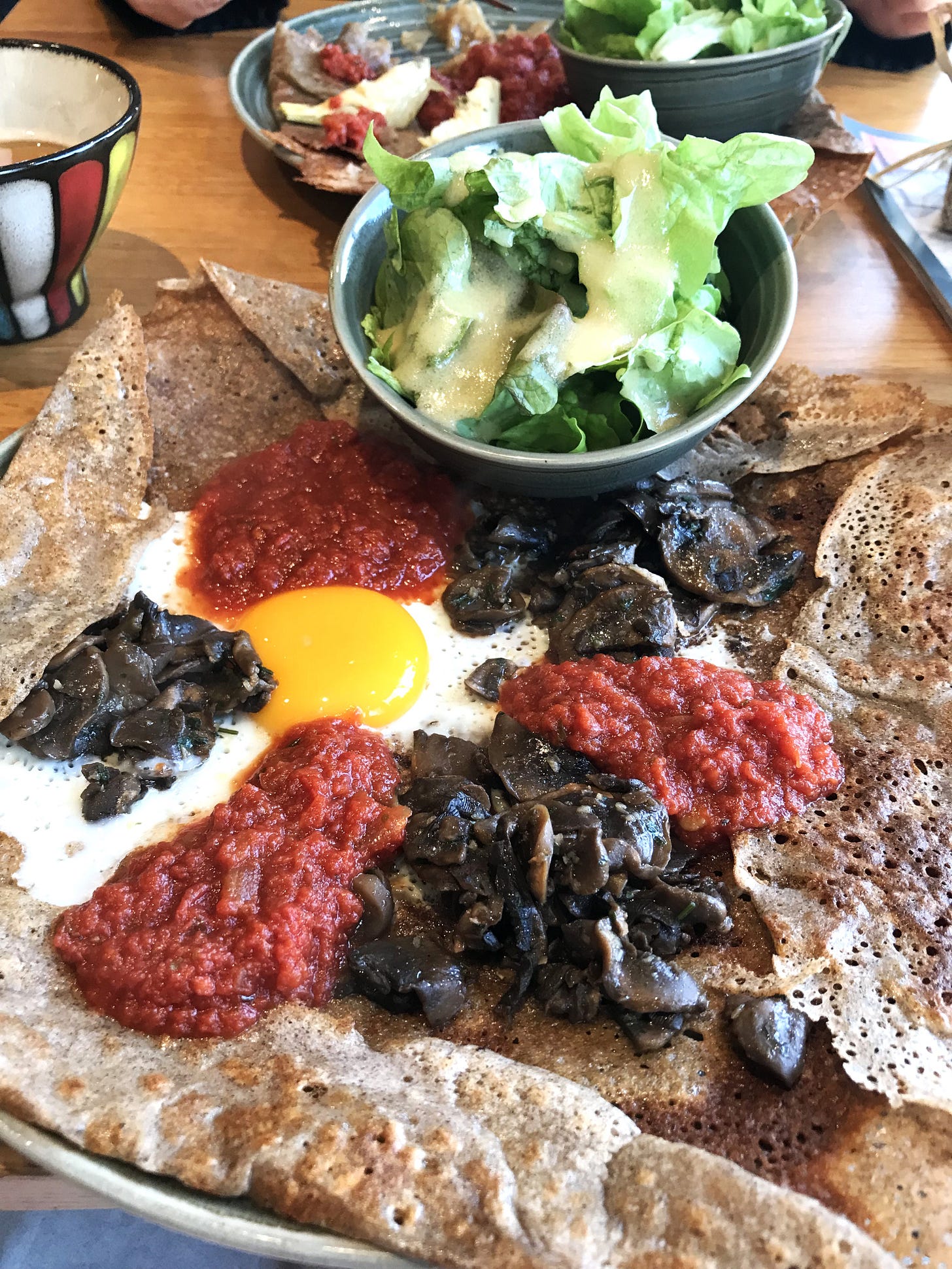Footnotes to a Conversation, January 29, 2024
“If you are going through hell, keep going.” – Winston Churchill
Baguettes, Cervelle de Canut, Crêpes
Baguettes are so quintessentially French, but how did they originate? The baguette may have been facilitated by an Austrian who installed France’s first steam oven as it “made it possible to bake loaves with a crisp crust and fluffy centre, because the steam allowed the crust to expand.” There’s one legend that says Napoleon ordained long, thin baguettes so they would fit in soldiers’ pockets. But the baguette may also have been invented so that the loaves could be torn rather than cut with a knife, taking a potential weapon out of the hands of the workers brought in from all over France to work on the Paris metro. [History Hit]
Nothing remains static. One bakery in Lyon refuses to sell either croissants or baguettes. Instead, they sell substantial loaves made from a variety of different flours (rye, buckwheat, spelt, gluten-free) and packed with fruit and nuts (or chocolate). They don’t boast of being local and organic; instead they take it for granted. [Antoinette]
I was a little nervous to be presented with cervelle de canut for dinner in Lyon, but the homeowner reassured me it was a local cheese – not brains. Made from fromage blanc, cream, and finely chopped herbs, salt, pepper, olive oil, and vinegar, it was often eaten three times a day by Lyon’s silk workers. [Wikipédia]
I’ve been in Brittany for just a few days and have managed to eat crêpes twice! It’s great to be able to go to a restaurant and be assured of vegetarian options. Savoury crêpes (often called a galette) are made with buckwheat flour (gluten-free), while white flour with milk and eggs is used for dessert crêpes. Archaeologists have traced crêpes back 7,000 years when they would have been a simple porridge spread on a hot stone or a plate placed in the hearth to cook. Buckwheat was originally from Asia and was introduced to Brittany by the Dutch. It was well suited to Brittany as it could be grown rapidly in poor soil, helping rural Bretons to make it through a difficult period in their history. [Wikipedia]
Art or Money Grab?
Digital artists claim that immersive experiences, such as those involving the works of Van Gogh, are a money grab, use old technology, and prevent viewers from appreciating what immersive experiences could actually be.
“For example, the work of studio DRIFT, which is led by Dutch artists, includes creating an autonomously moving group of illuminated drones, programmed to fly using an algorithm derived from years of research into starling murmurations. The post-digital art group Random International created Rain Room – where visitors entered a downpour without getting wet”.
The artists also question whether it’s respectful to take advantage of the works by deceased artists in this way. What do you think? [The Guardian]
Footnotes to a Conversation is a weekly Monday feature covering an assortment of topics that I’ve come across in the preceding week – books, art, travel, food, and whatever else strikes my fancy. I also post occasional articles on other dates, including frequent book reviews and travel tales.
If you share my love of nature, check out EcoFriendly West, an online publication encouraging environmental initiatives in Western Canada, and Nature Companion, a free nature app for Canada’s four western provinces.





